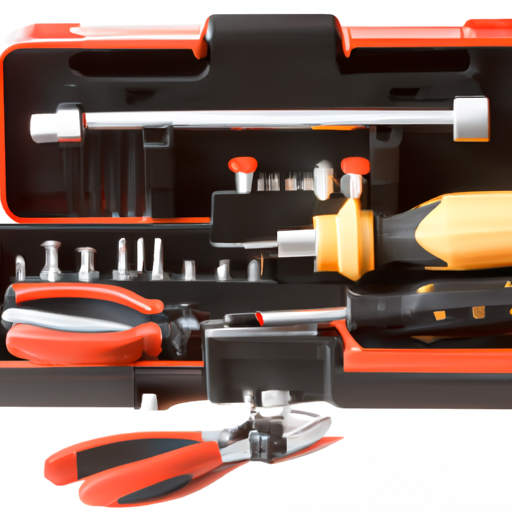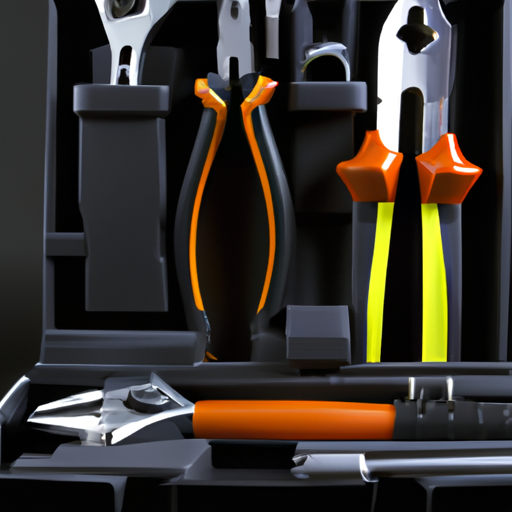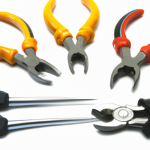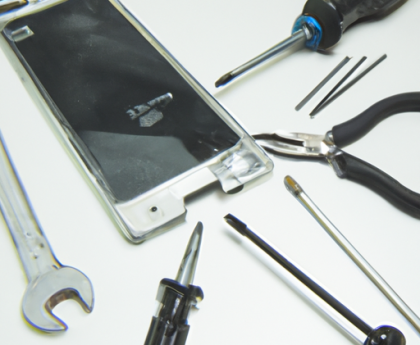“Unlock Your Potential with Toolkits!”
Introduction
Toolkits are an invaluable resource for anyone looking to develop their skills and knowledge in a particular area. They provide a comprehensive set of tools and resources to help users learn, understand, and apply the concepts and techniques associated with a particular topic. Toolkits can be used to develop skills in a variety of areas, such as programming, web development, data analysis, and more. They can also be used to help users understand the fundamentals of a particular subject, such as mathematics, physics, or chemistry. Toolkits are an essential part of any learning journey, and can be used to help users become more proficient in their chosen field.
How to Create a Comprehensive Toolkit for Your Business
Creating a comprehensive toolkit for your business is an important step in ensuring the success of your venture. A toolkit is a collection of resources, processes, and strategies that can be used to help your business reach its goals. It should include everything from marketing materials to financial plans and operational procedures. Here are some tips for creating a comprehensive toolkit for your business.
1. Identify Your Goals: Before you can create a toolkit, you need to identify your business’s goals. What do you want to achieve? What are your short-term and long-term objectives? Once you have a clear understanding of your goals, you can begin to create a toolkit that will help you reach them.
2. Gather Resources: Once you have identified your goals, you need to gather the resources that will help you reach them. This could include marketing materials, financial plans, operational procedures, and more. Make sure to include resources that are relevant to your business and its goals.
3. Develop Strategies: Once you have gathered the resources, you need to develop strategies for using them. This could include creating a marketing plan, developing a budget, or creating operational procedures. Make sure to include strategies that are tailored to your business and its goals.
4. Implement the Toolkit: Once you have created your toolkit, it’s time to put it into action. Make sure to review the toolkit regularly and make adjustments as needed. This will help ensure that your business is on track to reach its goals.
Creating a comprehensive toolkit for your business is an important step in ensuring its success. By following these tips, you can create a toolkit that will help your business reach its goals.
The Benefits of Investing in Quality Toolkits
Investing in quality toolkits is a wise decision for any individual or business. Quality toolkits provide a wide range of benefits that can help to improve efficiency, reduce costs, and increase productivity.
The first benefit of investing in quality toolkits is that they are designed to last. Quality toolkits are made from durable materials that are designed to withstand the rigors of daily use. This means that they will not need to be replaced as often as cheaper toolkits, which can save money in the long run. Quality toolkits also come with warranties, so if something does go wrong, it can be replaced or repaired quickly and easily.
Another benefit of investing in quality toolkits is that they are designed to be ergonomic. Ergonomic toolkits are designed to reduce strain on the user’s body, which can help to reduce the risk of injury. This is especially important for those who use their toolkits on a regular basis. Quality toolkits also come with features such as adjustable handles and grips, which can make them easier to use.
Finally, investing in quality toolkits can help to improve productivity. Quality toolkits are designed to be efficient and effective, which can help to reduce the amount of time it takes to complete a task. This can help to increase the overall productivity of a business or individual.
In conclusion, investing in quality toolkits is a wise decision for any individual or business. Quality toolkits provide a wide range of benefits that can help to improve efficiency, reduce costs, and increase productivity. They are designed to last, are ergonomic, and can help to improve productivity. Investing in quality toolkits is an investment that will pay off in the long run.
The Best Toolkits for DIY Home Improvement Projects
DIY home improvement projects can be a great way to save money and add value to your home. However, it is important to have the right tools for the job. Here are some of the best toolkits for DIY home improvement projects:
1. Stanley 65-Piece Homeowner’s Tool Kit: This comprehensive toolkit includes all the basics you need for most home improvement projects. It includes a hammer, screwdrivers, pliers, wrenches, and more.
2. DEWALT Mechanics Tool Set: This set includes over 150 pieces, including sockets, ratchets, and wrenches. It also includes a durable carrying case for easy storage and transport.
3. Craftsman Homeowner’s Tool Set: This set includes over 200 pieces, including a hammer, screwdrivers, pliers, wrenches, and more. It also includes a durable carrying case for easy storage and transport.
4. Apollo Tools DT9706 53-Piece Household Tool Kit: This set includes all the basics you need for most home improvement projects. It includes a hammer, screwdrivers, pliers, wrenches, and more.
5. BLACK+DECKER 20V MAX Cordless Drill/Driver: This cordless drill/driver is perfect for drilling holes and driving screws. It is lightweight and easy to use.
These are just a few of the best toolkits for DIY home improvement projects. With the right tools, you can tackle any project with confidence.
How to Choose the Right Toolkit for Your Needs
When it comes to selecting the right toolkit for your needs, it is important to consider a few key factors. First, you should consider the type of project you are working on and the tools that are necessary to complete it. For example, if you are working on a carpentry project, you will need a different set of tools than if you are working on a plumbing project.
Second, you should consider the quality of the tools. It is important to invest in quality tools that will last and provide you with the best results. Quality tools are typically more expensive, but they are worth the investment in the long run.
Third, you should consider the size of the toolkit. If you are working on a large project, you may need a larger toolkit with more tools. On the other hand, if you are working on a smaller project, you may only need a few basic tools.
Finally, you should consider the cost of the toolkit. While quality tools are typically more expensive, you can often find good deals on toolkits if you shop around. Additionally, you may be able to find used toolkits at a discounted price.
By considering these factors, you can ensure that you select the right toolkit for your needs. Investing in quality tools and the right size toolkit will help you complete your project quickly and efficiently.
The Pros and Cons of Investing in Toolkits vs. Individual Tools
Investing in toolkits versus individual tools can be a difficult decision for any DIY enthusiast. On the one hand, toolkits offer a wide variety of tools in one convenient package, while individual tools can be more specialized and tailored to specific needs. To help you make an informed decision, here are some of the pros and cons of investing in toolkits versus individual tools.
Pros of Investing in Toolkits
Cost: Toolkits are often more cost-effective than buying individual tools. This is because toolkits usually include a variety of tools that would cost more if purchased separately.
Convenience: Toolkits are convenient because they provide a wide range of tools in one package. This means that you don’t have to search for and purchase individual tools, saving you time and effort.
Variety: Toolkits usually come with a variety of tools, allowing you to tackle a wide range of projects.
Cons of Investing in Toolkits
Quality: Toolkits often contain lower-quality tools than those purchased individually. This is because toolkits are designed to be cost-effective, so the quality of the tools may be sacrificed in order to keep the price down.
Unnecessary Tools: Toolkits often contain tools that you may never use. This means that you are paying for tools that you may never need, which can be a waste of money.
Limited Selection: Toolkits usually contain a limited selection of tools, so if you need a specific tool that isn’t included in the kit, you will have to purchase it separately.
Pros of Investing in Individual Tools
Quality: When you purchase individual tools, you can choose the highest-quality tools available. This means that you can be sure that the tools you purchase will last for many years.
Specialized Tools: When you purchase individual tools, you can choose tools that are specifically designed for the task at hand. This means that you can be sure that the tools you purchase will be the best for the job.
Customization: When you purchase individual tools, you can customize your tool collection to suit your specific needs. This means that you can purchase the exact tools that you need, without having to pay for unnecessary tools.
Cons of Investing in Individual Tools
Cost: Purchasing individual tools can be more expensive than buying a toolkit. This is because you are paying for each tool separately, rather than getting a variety of tools in one package.
Time: Purchasing individual tools can be time-consuming, as you have to search for and purchase each tool separately.
In conclusion, investing in toolkits versus individual tools is a personal decision that depends on your needs and budget. Toolkits are often more cost-effective and convenient, while individual tools can be higher-quality and tailored to specific needs. Ultimately, the decision is yours to make.
Conclusion
Toolkits are an invaluable resource for anyone looking to develop their skills and knowledge in a particular area. They provide a comprehensive set of tools and resources that can be used to build a strong foundation of knowledge and skills. Toolkits can be used to develop a wide range of skills, from basic technical skills to more advanced problem-solving and decision-making skills. With the right toolkit, anyone can become an expert in their chosen field.




